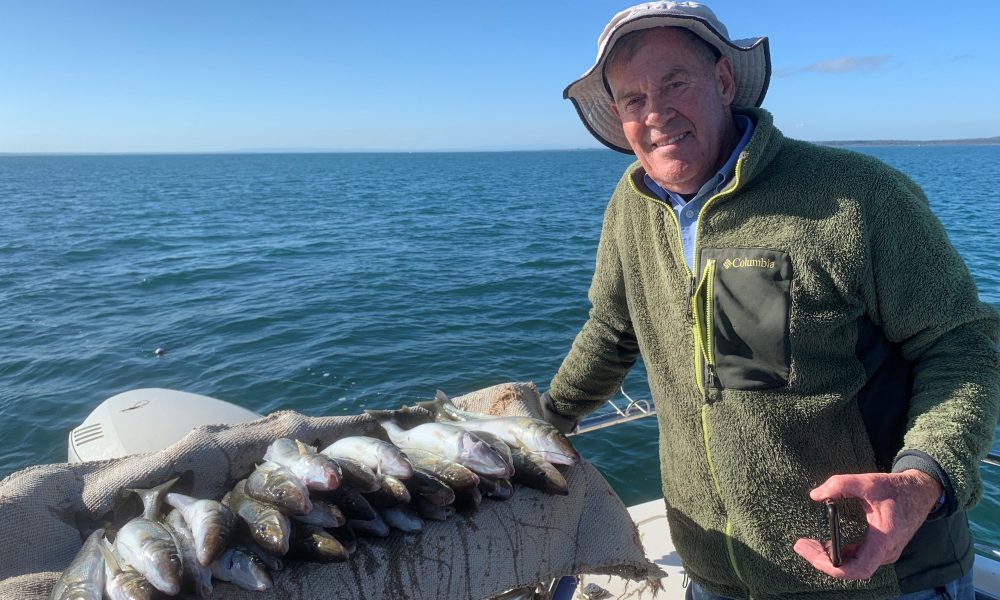
- Scientific Name
- Sillaginodes punctata
- Size
- Commonly around 35cm, up to 72cm
- Weight
- Up to 5kg
General Description
King George whiting is one of the most popular marine species in Victoria. Whiting offer a great fishing experience for beginners and avid fishers alike.
King George Whiting can be identified by their long-slender body with a relatively small head and mouth. They are silvery-bronze and tan in colour with distinct brown spots on their flanks. Whiting are commonly caught around 35cm but can grow to a maximum of 72cm in length and weight up to 5kg.
Behaviour
They often inhibit bays, estuaries and coastal areas with seagrass, macro algae or sand and prefer depths up to 200 metres. Juveniles can often be found in seagrass beds, while adults prefer deeper channels, gutters and offshore areas. They can be found feeding in the shallows at night during high tide.
Where to Find
King George Whiting can be found across southern Australia from Sydney (New South Wales) across to Jurien Bay (Western Australia) as well as around Tasmania. In Victoria, there are so many hotspots to target whiting across the coastline. Some of our favourite spots include Port Phillip Bay, Western Port, Anderson Inlet, Corner Inlet, Shallow Inlet, and Portland.
Fishing Rules
To improve your chances of catching a delicious feed of whiting, it is ideal to fish during the two hours following high tide as the tide runs out. Even better if you are fishing early in the morning or in the evening post high-tide. While you can catch whiting year round, May to September are often the best times of year to target them in Victoria. Whiting respond well to a range of baits including pipis, bass yabbies, small cut strips of squid, mussels and sand worms. Whiting respond well to light tackle, a 2-4kg line is recommended. However, a heavier line may be needed if you are fishing in a reefy area.
Threats and Management Issues
King George Whiting have a minimum legal size of 27cm and a bag limit of 20 in Victoria.







